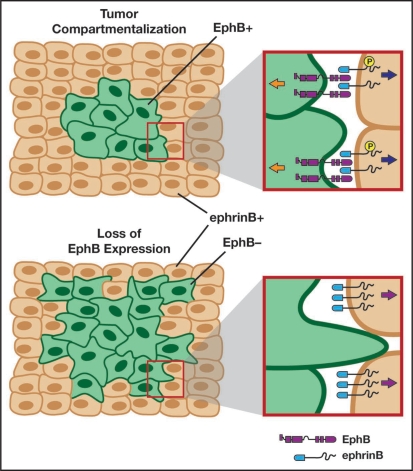Figure 2.
Loss of Eph-ephrin interactions may result in tumor invasion. Adenoma cells (green) may be compartmentalized and restricted from invasion through bi-directional signaling (upper left panel) established by the expression of ephrinBs in the surrounding normal tissue (flesh tone cells). During metastatic progression, EphB expression is lost in the adenoma cells (bottom left panel) and leads to unidirectional signaling (bottom right panel). This loss of contact with the EphB receptor may lead to an accumulation of unphosphorylated ephrinB1 in the surrounding cells (bottom right panel). The unphosphorylated ephrinB1 may disrupt the Par complex (see Fig. 1), leading to tight junction dissolution and allowing tumor cells to invade the surrounding tissue. Adapted in part from Clevers and Batlle, 2006.41

